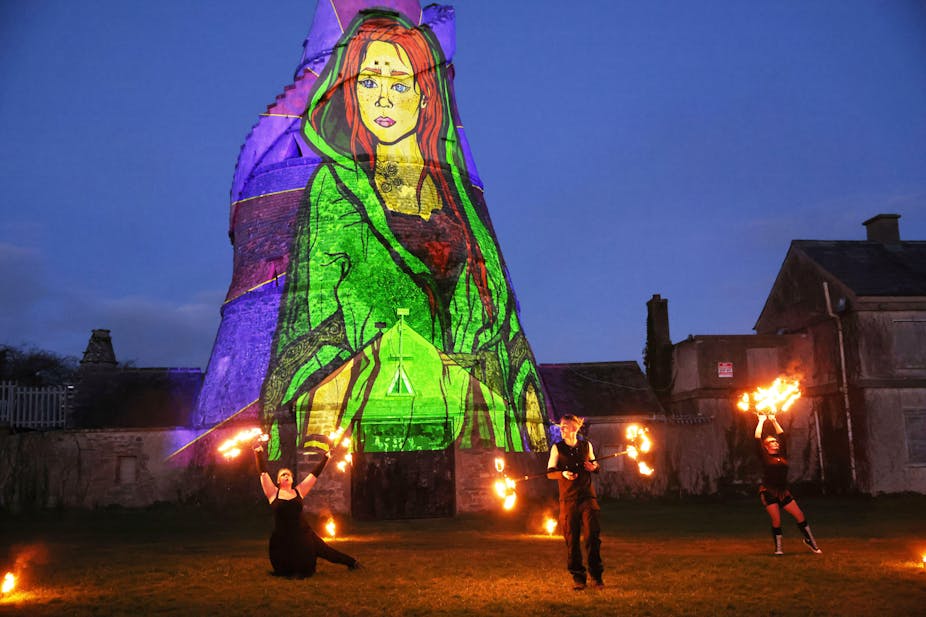Brigid’s Day is the first traditional festival of the calendar year in Ireland and has been for centuries. However, it was only in 2023 that the government officially recognised Brigid’s Day as an official holiday.
The Celtic year was traditionally broken up by four festivals, known as the quarter days: Imbolg, Bealtaine, Lughnasa and Samhain. Imbolg (also spelled Imbolc) is celebrated on February 1 and signals the beginning of the Celtic season of light, a time for renewal and essentially a new year.
Many of the rituals associated with Imbolg (and the other quarter days) actually begin on the eve of the festival because, in Celtic belief, days begin at sunset as opposed to sunrise. Imbolg is a festival that has strong associations with Brigit (the early Celtic goddess) and Brigid (the later saint) and is associated with ideas of renewal, light, fertility, fire, food production.
The beliefs and lore around both Brigit the goddess and Brigid the saint are almost identical and it is generally accepted that one developed from the other.
The connections between Brigit and Brigid
Brigit was the daughter of Dagda, a member of the mythical Tuatha Dé Dannan (Irish warrior army). She was a poet, a smith and a healer. She was very much associated with women, fire and fertility. During Imbolg, Brigid was honoured with feasts and bonfires, in the hopes that the new season would bring a fruitful harvest and good luck.
Saint Brigid has similar associations and was said to have been born in the 5th century on the threshold of a door between this world and another. She never wanted to marry, despite her father’s wishes, and was said to have gouged out her own eye to ruin her great beauty. Her sight returned instantly but she gave her life to charity.
In pre-Christian times a sacred fire was kept burning in Kildare, which according to several scholars, priestesses gathered around invoking the goddess Brigit to protect their herds and provide a bountifully harvest.
Many pre-Christian traditions in Ireland were adapted and it is believed that Brigid’s flame was lit on the same site as the pre-Christian fire. In the 12th century, the scholar Giraldus Cambrensis (Gerald of Wales) wrote that 19 nuns took turns keeping the fire continuously burning at Kildare in honour of Brigid.

On the eve of the festival of Brigid, rushes were strewn outside the house and doors left unlocked so Brigid could enter. Offerings were often left for her in the house and Brigid would bestow blessings and ensure protection for the year ahead.
The Brat Bhríde (Brigid’s ribbon/cloth) is hung on the handle of the door and it is believed that Brigid endows the cloth with healing powers . In the Irish Folklore Commission’s Schools’ Collection of the 1930s many descriptions of this tradition exist, as well as the manner in which the cloth was later used to heal headaches and other mild conditions. Many believed that the same piece of cloth or ribbon left out over a number of years would hold even more healing power.
The making of Brigid’s crosses has been the most continuous and widespread of the traditions associated with the festival. Made traditionally on 31 January from rushes or straw, the equal-armed crosses were placed above the door of the home, over the fire or placed in the traditional thatched roof to ward off bad spirits, bad luck and to keep the house and its occupants safe for the year ahead.
Regional variations of the crosses were common and the National Museum of Ireland’s collection is quite vast. Like many traditions associated with Brigid, the significance of the crosses is open to interpretation.
Some may connect them with religion but many more consider them simply a tradition long held by their ancestors. A gift of a cross today can simply signal the giving of good wishes and good health for the year ahead.
The Biddy tradition
Communities in Mid Kerry in the south-west of Ireland have had a continuous and particular commitment to Brigid. They have always celebrated the masquerade tradition associated with her, known as the Biddy.
A group of performers who dress in mostly white, wear traditional straw hats and parade around the area, calling to various households en route. They bring with them an effigy of Brigid and perform music and songs.
The Biddy tradition is connected with the bestowing of good luck and prosperity on the community, crops and animals for the coming year, and the Brigid effigy in particular is considered a great source of positivity. While the celebration today has expanded to include cross and straw-making workshops, butter-making classes and much outreach work in the community, the Biddy forms the focal point of the celebration.
Increased awareness of the goddess and saint is very apparent throughout Ireland and in diaspora communities today. In 2023, the feast day became an official holiday in Ireland and new opportunities to celebrate have arisen.
Festivals and events are programmed throughout the country and online, many focusing on women, empowerment, food, sustainability and craft as well as the more traditional material culture (crosses, brat bhríde and strawcraft) and storytelling which has always been central to the tradition.
Brigit: Dublin City Celebrating Women is an example of a new celebration of the festival. Now in its second year, it focuses on workshops and events which are influenced by the Celtic goddess in particular. Crafts traditionally associated with women, such as lace-making, are programmed alongside Smith workshops and screen-printing. The festival definitely presents a contemporary and diverse view of all that Brigit and Imbolg represent.

Looking for something good? Cut through the noise with a carefully curated selection of the latest releases, live events and exhibitions, straight to your inbox every fortnight, on Fridays. Sign up here.

